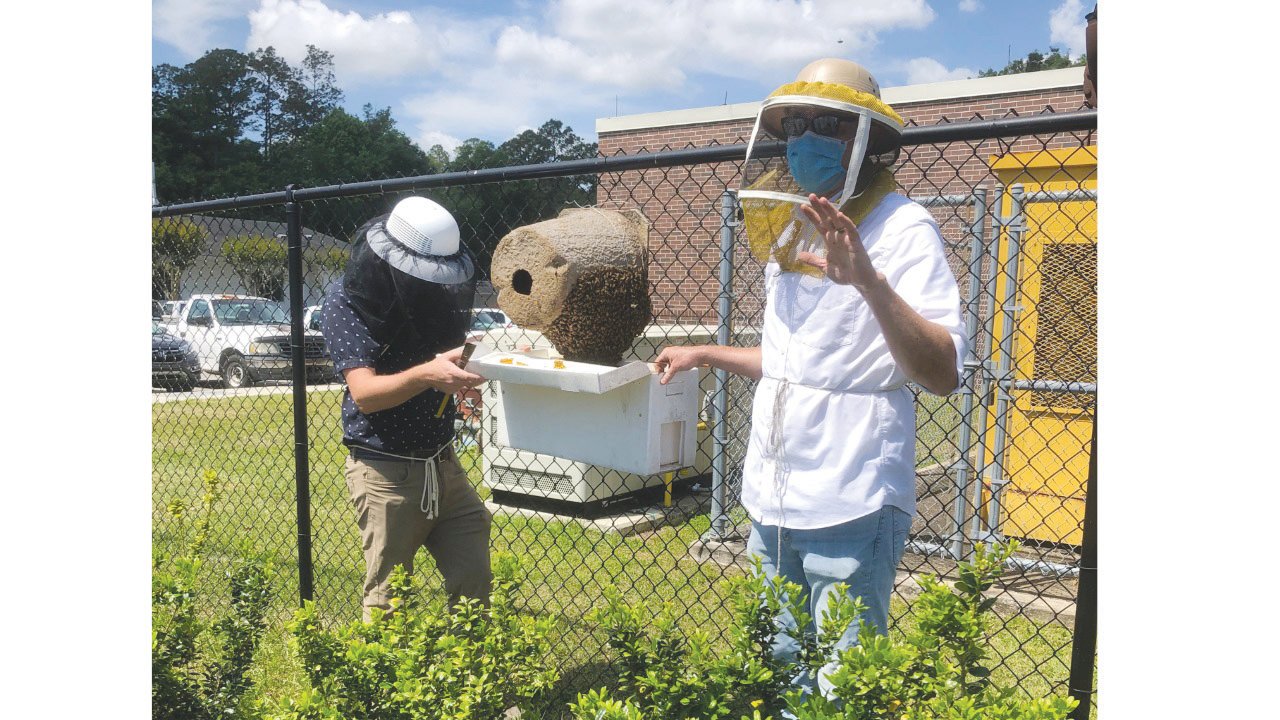Bee careful: Swarm season is here!
CLAY COUNTY – The warm Florida spring is well upon us and honey bee colonies have certainly taken notice. The UF/IFAS Clay County Extension Office has received numerous calls concerning honey …
This item is available in full to subscribers.
Attention subscribers
To continue reading, you will need to either log in to your subscriber account, or purchase a new subscription.
If you are a current print subscriber, you can set up a free website account and connect your subscription to it by clicking here.
If you are a digital subscriber with an active, online-only subscription then you already have an account here. Just reset your password if you've not yet logged in to your account on this new site.
Otherwise, click here to view your options for subscribing.
Please log in to continueDon't have an ID?Print subscribersIf you're a print subscriber, but do not yet have an online account, click here to create one. Non-subscribersClick here to see your options for subscribing. Single day passYou also have the option of purchasing 24 hours of access, for $1.00. Click here to purchase a single day pass. |
Bee careful: Swarm season is here!
CLAY COUNTY – The warm Florida spring is well upon us and honey bee colonies have certainly taken notice. The UF/IFAS Clay County Extension Office has received numerous calls concerning honey bees forming dense masses of bees, a very intimidating sight, especially when spotted on the wall of your house or even your windshield!
Why do honey bees swarm?
Honey bees live in large colonies, which can contain anywhere from 10,000 to 150,000 bees. When flowers are blooming in spring, honey bee colonies are full of resources including pollen, nectar and honey. The bees have plenty of supplies to support a growing colony, but there is only so much space in the hive, which can become crowded with bees. When the colony gets too big, the queen will take 50 to 60% of the worker bees in the hive with her to start another colony in a new hive, leaving the remaining workers plenty of space to grow and develop the original colony. The bees and their queen set off in a swarm, usually landing together on a branch, fence, wall, or other surfaces in a large mass of bees. The new colony waits here while “scout” bees search the area for a suitable new home. Once they find the perfect spot, they’ll return to the swarm and lead them to their new home to start hive construction.
Are honey bee swarms dangerous?
It’s no secret that bees can sting, and it is always wise to use caution around them and leave them alone when possible. However, it is unfortunate that the fact that bees sting has made many fearful of this very interesting insect. When swarming, honey bees are relatively docile. A swarm of bees does not have a hive, resources or brood (honey bee eggs and larvae) to protect, and therefore is not very aggressive. Always respect the colony’s space to avoid stings and take bee allergies very seriously, but there’s no rush to call pest control when you see a swarm of honey bees.
What should I do when I find a swarm?
Luckily, a honey bee swarm is a short-term incident. The swarm of honey bees will move into their new hive within 24 hours, so leaving the swarm alone and waiting for them to move on is an option. However, a honey bee swarm also has the opportunity to be a valuable addition to a beekeeper’s apiary. If possible, contact a local beekeeper or beekeeper’s association to see if they may be able to come to collect the swarm, especially if it rests in a very inconvenient place. A simple online search will bring you right to local beekeeper’s associations who can get in touch with nearby beekeepers. It’s even possible that the swarm in your yard came from a neighbor beekeeper who might want to get his bees back! The local UF/IFAS Extension office is also available to assist.
UF/IFAS Extension Clay County is available to help and work with residents, farmers, and any other interested parties with agriculture and natural resources topics, including beekeeping and small farm management.











